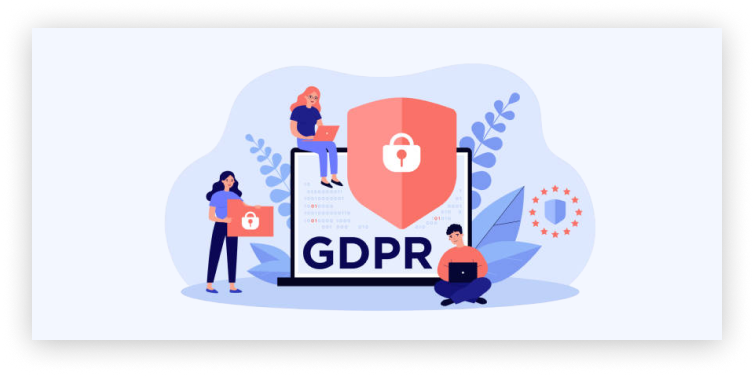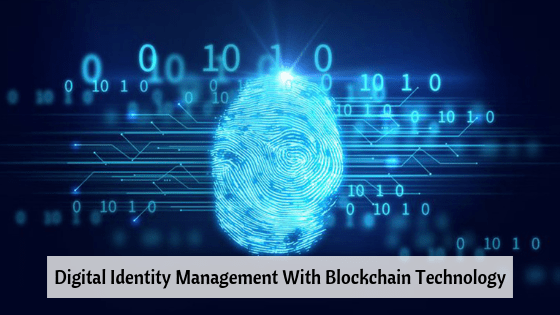
Role of Blockchain in Cyber Security
SubscribeMany businesses are widely adopting blockchain applications worldwide, and it is about time that we embrace them with open arms.
Blockchain, a Distributed Ledger Technique (DLT), focuses on building trust in an untrusting ecosystem, making it a potentially powerful Cybersecurity Technology.
- What is Blockchain
- Blockchain in Cyber Security
- How does Blockchain enhance Cybersecurity
- How Does Security Differ From Blockchain Types
- What are Permissioned Blockchain Networks?
- Differences Between Permissioned and Permissionless Blockchain
- Applications of Permissioned Blockchains
- What is GDPR?
- GDPR Policies
- GDPR with Blockchain?
- GDPR and its Global Outreach
Let’s discuss the same in detail.
What is Blockchain
Blockchains are digital ledgers that are programmed to record any valuable information. Blockchains are the brainchild of Satoshi Nakamoto, who created them to solve the double spending problems associated with cryptocurrency. All the nodes in the network can access the nodes and data stored inside the nodes.
All transactions and data modifications in a blockchain will occur with the mutual consensus of the network members. As a result, data stored in blockchain networks cannot be corrupted. The data stored in the blocks in a blockchain network is hosted by millions of computers that are geographically separated simultaneously and are accessible to anyone on the web. Blockchains are the most secure data records because they are fully public and easily verifiable.

Blockchain in Cyber Security

Blockchain technology has been in existence since 1991. Blockchain was initially only used for financial transactions. However, in 2014, it was possible to observe the most recent advancements and potential in other financial and inter-organizational transaction domains where new chances were being explored.
Organisations are now leveraging Blockchain technology to build blockchain-based solutions for their customers in distributed databases, digital transactions, cybersecurity, and healthcare. The primary advantage of using blockchain technology is that it ensures transaction security due to its cryptography, decentralisation, and consensus principles.
While the adoption of blockchain has provided many benefits to global organisations, it has also attracted many cyber criminals looking to exploit the technology and target organisations with cyberattacks. In recent years, Blockchain security has become an essential component of organisations’ processes, keeping them on their toes in the face of cyberattacks and hacking attempts.
How does Blockchain enhance Cybersecurity?
Authentication does not need human intervention.
With the advent of blockchain in cyber security, businesses can now authenticate devices and users without the conventional method of passwords.
This will eliminate human intervention of any sort from the process of authentication. This will prevent it from becoming a loophole for a potential attack.
Decentralised Storage
Blockchain users can maintain their data on their computers in their network. By doing so, they will make sure that the chain won’t collapse. On the blockchain network, every user has a role to play in storing some or all the blockchain.
Each member of the blockchain network is responsible for verifying the data on the web to ensure that the existing data cannot be removed from it and false data cannot be added to it.
Traceability
Every transaction added to a private or public blockchain is time-stamped and signed digitally. This facility ensures that companies can trace back to a particular period for every transaction and locate the corresponding party on the blockchain with the help of their public address.
This feature establishes a connection between non-repudiation and the assurance that the author’s signature on a document cannot be independently verified. Since every transaction is cryptographically connected to a user, this specific blockchain technology will boost the system’s dependability.
Distributed denial of service (DDoS)
Blockchain transactions can be easily denied if the participating units are impeded from sending transactions. A DDoS attack on a set of entities or even an entity can disrupt the entire attendant infrastructure and the blockchain organisation.
These attacks will bring about the risk of integrity issues to the blockchain network.
By using blockchain technology, we can safeguard data and ensure that the system is not vulnerable to cyber and DDoS attacks.
How Does Security Differ From Blockchain Types?
Public blockchains are open to everyone; anyone can join and validate transactions. Private blockchains are usually restricted to business networks. A single entity or consortium controls membership. Permissionless blockchains have no limitations on processors. Permissioned blockchains are only accessible to users who have been granted identities via certificates.

Let’s have a brief discussion about Permissioned Blockchain.
What are Permissioned Blockchain Networks?
A blockchain network often certifies a transaction through mutual agreement, fulfilling the initial purpose for which it was designed. The privacy of the data kept in the blockchain has been a subject of rumours in recent years. The privacy concerns thus raised across the blockchain community led to the creation of permissioned blockchains.
Permissioned blockchain development allows the network to entrust a particular group of members on the web with the express authority to validate the transaction blocks. A well-conceived permissioned blockchain network also enables the participants in the network to restrict the creation of smart contracts and transact on the blockchain network. Due to these profound reasons, permissioned blockchain platform development has gained prominence recently.
Differences Between Permissioned and Permissionless Blockchain
Permissioned blockchains are identical to permissionless blockchains because they use the same technologies. Permissioned blockchains, on the other hand, do not allow users to access the blockchain without identification.
Much of the internal operations of the blockchains are the same. The key differences between them are:
| Permissionless blockchain | Permissioned blockchain | |
|---|---|---|
| Enterprise vs Public use | Permissionless blockchain, allows anyone to participate in the network. Anyone can take a read-only role or make worthy changes to the blockchain, like adding a new block | Permissioned blockchains are popular among industry firms and enterprises, for which security, identity, and role definition are essential. |
| Decentralisation | Permissionless blockchains have a wide decentralisation where they allow more users and can extend across larger networks. | On the other hand, permissioned blockchains require various amounts of centralization as they are generally used for enterprise and business purposes. |
| Development | Permissionless blockchains are open source, which means that a community develops them; they can be customised and used by anyone. | Whereas permissioned blockchains are generally controlled by the developers or the businesses using them. |
| Transparency | Permissionless blockchains are less transparent as they provide a certain amount of anonymity for the users. | Permissioned blockchains require more transparency at specific levels since they are used for conducting business. |
Applications of Permissioned Blockchains
1. Finance
- Initial Coin Offering (ICO)
- Hedge Funds
- Payments and settlements
- Prediction markets
- Insuranc
- International Money Transfer
2. Smart Contracts
3. Real Estate
4. Digital Identity/Verification
5. Voting
6. Health Care
GDPR and Blockchain
Do GDPR and Blockchain go together? Well, let’s find out.
What is GDPR?
General Data Protection Regulation (GDPR) is a framework or set of rules drafted by the European Union (EU) that deals with personal data privacy, etc. The GDPR policies play a significant part in transforming the business of any digital venture.
The European Union implemented the GDPR policies with specific goals in mind. And they are as follows:
1. To create a unified data regulation framework across European countries.
2. To give individuals control over the storage and use of their data.
GDPR Policies
The GDPR contains 11 chapters and 91 articles. Some of them which have the most significant potential impact on security include the following:
Article 15 – Grants European Union (EU) citizens the right of access which requires companies to detail what personal data is being processed and how upon request.
Articles 17 & 18 – They grant European Union (EU) citizens more control over personal data that is processed automatically. It gives the right to be forgotten and data erasure which requires companies to stop processing and delete personal data upon request.
Article 20 – Grants EU citizens the right to data portability to enable citizens to transfer personal data between companies upon request.
Article 25 & 32 – Require companies to implement reasonable data protection measures to protect EU citizens’ data and privacy by design.
Articles 33 & 34 – Require companies to report data breaches to supervisory authorities and individuals affected by a breach within 72 hours.
Article 35 – Require companies to perform data protection impact assessments to identify risks to EU citizen data and outline measures to ensure those risks are addressed.
Article 36 & 37 – Requires certain companies to appoint data protection officers to oversee data security strategy and responsibilities in ensuring GDPR compliance and reporting to Supervisory Authorities and data subjects.
Article 45 – Extends data protection requirements to international companies that collect or process personal data of EU citizens are subject to the exact data protection requirements and penalties as EU-based companies.
Article 79 – Article 79 specifies the penalties for GDPR noncompliance, which can be up to 4% of the violating company’s global annual revenue, depending on the severity of the violation.
GDPR with Blockchain?

The GDPR and blockchain policies have a lot of things in common, even though it doesn’t look like it at first glance. Both work to decentralise the data controller and stop centralised service providers’ power control. Also, it helps to control the users’ data themselves instead of relying on third parties.
In public or centralised blockchains, the entire data will be replicated and transferred to all the participants in the network. This makes the significant elements involved in the GDPR policies, like data deletion and privacy, an impossible job for the users.
Because data on the blockchain cannot be deleted or modified later, it appears that it is not possible to comply with some of the GDPR’s mandates, particularly the “right to erasure,” which enables an EU resident to ask for the removal of their information from the database.
GDPR and its Global Outreach
The GDPR is an evolution from current EU laws, not a revolution. The real possibility of GDPR policies is not only limited to the European Union countries alone. The countries can implement it in any part of the world. Apart from protecting data and other valuable information within the EU, they will also be responsible for handling the private information of EU residents outside the European continent.
One significant change is that all companies and organisations that process data from EU citizens must comply with the GDPR’s requirements. This alone will give the new regulation worldwide reach.
Final Thoughts
Blockchains mitigate the risk of human error significantly by removing the element of human intervention from data storage. This is important since a large number of security breaches occur from human intervention.
This blog post gives a detailed description of blockchain technology in Cybersecurity and how GDPR and blockchain go together. So if you want to develop a blockchain application for cybersecurity, contact Cryptosoftwares today.
- What is Cryptojacking? Detection and Preventions Techniques
- How to Give Cryptocurrency As a Gift?
- Blockchain Development Life Cycle – Step by Step Guide
- How To Hire A Blockchain Developer For Your Company
- How to Choose the Right Bitcoin Development Company – A Complete Guide
- Common Bitcoin Scams – Beware Of Fraudsters
- How can entrepreneurs leverage blockchain in 2023?
- Role of Blockchain in Cyber Security
- Document and Certificate Verification Through Blockchain Technology
- Initial Coin Offering (ICO): Everything you need to know in 2023
- Categories
- Azure Blockchain Service
- Bitcoin
- Bitcoin Development
- Blockchain Application
- Blockchain Application Development
- blockchain developer
- Blockchain Development
- common bitcoin scams
- Crypto software features
- Crypto softwares
- Cryptocurrency
- Cryptocurrency Development
- Cryptocurrency Exchange Software Development
- Cryptocurrency review
- Cryptocurrency Trading
- Cryptocurrency Wallet Development
- ERC20 Token Development
- Hashing Algorithm
- ICO Development
- ICO Development Service
- ico website development
- Proof of Stake Coins
- Smart Contract Development
- Uncategorized














Leave a Reply